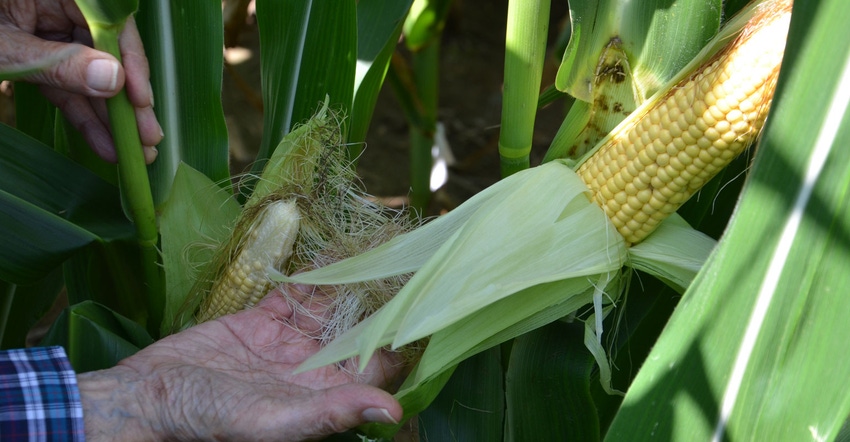
If you checked out the 4-H crops exhibits at your county fair this summer, chances are some stalks of corn on display had two ears. Traditional wisdom says the more ears the better, but those stalks with two ears may or may not get a blue ribbon. Some judges prefer to see representative stalks with just one large ear.
Why are there differing opinions about whether one or two ears per stalk is better? “In theory, it would be great if every stalk had two ears to contribute to yield,” says Dave Nanda, a plant breeder and director of genetics for Seed Genetics Direct, sponsor of Corn Watch ’22. “Perhaps someday, if plant breeders change the architecture of corn or if cultural practices change, that might happen.
Related: Aborted tips can drag down yield
“The reality today is that most plants are better off supporting and developing one good ear. If a second ear develops, it is usually smaller, and it may not pollinate as well. In fact, sometimes it only has scattered kernels, and contributes little or nothing to yield.”
Think like a plant
The overriding goal of corn plants is to produce as many viable progenies as possible, Nanda explains. If conditions are favorable before pollination, a second ear shoot may develop at the node below the main ear shoot. In fact, the plant can produce an ear shoot at multiple nodes. The catch is that while it can produce them, it may not be capable of filling all kernels on multiple ears.
If a second ear develops, it may silk slightly later than the main ear. Before all silks are pollinated, pollen may dry up. That’s why second ears sometimes aren’t pollinated as well, Nanda says. If the delay is long enough, there may be only a few ovules that pollinate and produce kernels. It’s possible that the plant can divert nutrients accumulated in the second ear to the main ear during grain fill if it’s trying to preserve and fill as many viable kernels on the main ear as possible.
In some cases, the second ear may appear much like the ear on a plant that emerged late and progressed late all season. Those ears are also usually smaller, and sometimes struggle to find enough pollen because silks emerged late. As a result, they can have pollination issues too, depending on how late the ear produced silks.
Both ears on late-emerging plants and second ears may wind up contributing little, if anything, to yield. Under the best of conditions, they likely will only add a small amount to yield.
“We’re often better off with a uniform stand with one large ear on each stalk,” Nanda concludes.
About the Author(s)
You May Also Like




